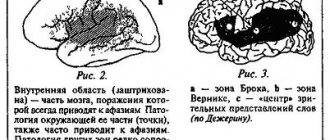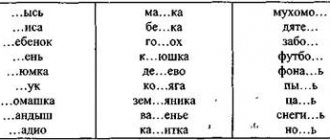Vowel sounds - sonants - consist of a voice, a musical tone formed as a result of rhythmic vibrations of the vocal cords. The oral cavity acts as a resonator: overtones (additional tones) are formed here, thanks to which each vowel sounds in a special way and has its own color (timbre). The nature of the overtones depends on the shape of the resonator, and in the oral cavity this shape is regulated by different positions of the tongue and lips.
For the articulatory classification of vowels in the modern Russian language, three features are most important:
- height of the back of the tongue;
- place of tongue elevation;
- labialization.
Let's look at each sign in turn.
Phonetics
Phonetics is designed to study speech sounds. It occupies a special position, which is determined by the fact that the subject of its study is language units of a material nature. Sounding speech is formed by the human speech organs and air vibrations. The perception of sounding speech occurs through the human hearing organs.
Phonetics deals with the most minimal unit of language - the sound of speech. There are an infinite number of such sounds. After all, everyone pronounces them in their own way. But among this variety we can identify sounds that are pronounced in the same way. The method of formation is the basis for the classification of sounds.
The main thing that phonetics studies is the classification of vowels and consonants. Articulatory and acoustically, speech sounds are either vowels or consonants. Vowels provide speech with melodiousness. Consonants are noise.
When air flows freely from the lungs through the vocal cords and oral cavity, sounds called vowels are formed. They differ only in the overtones formed by the movements of the tongue and lips.
Consonant sounds are produced when air overcomes obstacles in its path. They consist of voice and noise or only noise. Different ways of forming and overcoming these obstacles make it possible to distinguish consonant sounds from each other. The classification of vowel/consonant sounds in the Russian language is based on these differences. We will consider its principles further.
Phonetics is a branch of linguistics that studies the articulatory and acoustic features of speech sounds. Articulatory phonetics deals with the study of the anatomical and physiological nature of sound and the mechanisms of its production. Acoustic phonetics studies sound as oscillatory movements carried out by its passage through the vocal cords and oral cavity. The subjects of study of acoustic phonetics are its pitch, strength, longitude and timbre.
Vowels of other unstressed syllables
| Climb | Row | ||
| front | average | rear | |
| upper | And | s | at |
| average | b | ъ | |
| lower | |||
| Presence-absence of labialization | non-labialized | labialized |
An example of the articulatory characteristics of vowels: [pnarus] – [a] stressed vowel, lower rise, middle row, non-labialized.
It must be borne in mind that in the linguistic literature there are discrepancies in the articulatory classification of vowels.
The first table of the articulatory characteristics of vowels with the distribution of the latter by row and rise was proposed by N.I. Nadezhdin in 1844.
In 1911, the A.A. vowel table was created. Shakhmatov; it took into account not only the row and rise of vowels, but also the presence - absence of labialization, tension - non-tension of vowels; in this case, only stressed vowels were included in the table.
In the table V.A. Bogoroditsky combines vowels and consonants.
In 1911, the International Phonetic Association was created and improved by L.V. Shcherboy table of articulatory characteristics of vowels characteristic of many languages; this table had the shape of a triangle.
In the table I.A. Baudouin de Courtenay defines vowels according to three types of “extension pipe” (oral cavity). The main vowels in this table are as follows: [a] - the lowest, [u], [i] - the highest; while [y] is the most posterior and labialized, [and] is the most anterior. Each sound is represented as a combination of articulations [a-i-u], for example:
,
The table “Russian linguistic alphabet” was influenced by oriental studies. The table is built on the dichotomous principle of binomial™ of each distinction: the main oppositions in it are rounded-unrounded and front-non-front vowels. Features characterizing consonants are also noted; palatal, laryngeal, labial, dental consonants.
The most detailed table is the “quadrilateral by Daniel Jones”, who used it together with V.P. Trofimov in 1923 to characterize Russian vowels. The table of A.I. turned out to be close to this table. Thomson, proposed in 1906.
"Daniel Jones Quadrangle"
Each point in this table is a special “cell”. No matter how little the articulation of two sounds differs from each other, for each of them in the table you can find a special place - its own point. The difference in articulation is reflected by the arrangement of the dots: one dot is higher, lower, to the right or to the left; another. The bottom side of the quadrilateral is shorter than the top, and the back side is shorter than the front; This reflects the fact that in the lower position the movements of the tongue are more constrained than in the upper, and in the back they are more constrained than in the front.I
In modern linguistic literature, scientific and educational, the articulatory classification of vowels is usually used according to three criteria: rise, row, presence or absence of labialization; in this case, stressed vowels are considered (R.I. Avanesov, K.V. Gorshkova, V.V. Ivanov, V.V. Tsaiukevich, M.I. Matusevich, L.Ya. Malovitsky, etc.). The articulatory characteristics of unstressed vowels are proposed by A.A. Reformatsky, M.V. Panov, L.L. Kasatkin, I.D. Samoilova, and the differences in the proposed classifications are significant: [ъ| absent from M.V. Panova and L.L. Kasatkina; [L] is defined as a middle vowel, back raised, non-labialized M.V. Panov, as a vowel of the middle-low rise, middle-back row, non-labialized L.L. Kasatkin, as a low vowel, middle vowel, non-labialized I.D. Samoilova and the author of this textbook.
An interesting dichotomous scheme proposed by M.V. Panov, but she ignores the difference between the middle and back rows, the middle and lower rises (which is why [a] and [ъ] are not distinguished).
| Vowels | front row | unrounded | top lift | [And] |
| non-top lift | [e] | |||
| rounded | top lift | [y] | ||
| non-front row | non-top lift | [O] | ||
| unrounded | top lift | [s] | ||
| non-top lift | [а], [ъ] |
Basic phonetic processes in the vowel area
Change of vowels depending on position in relation to stress
Reduction
I. In unstressed positions, some vowels coincide in one sound.
In accordance with the stressed vowels [a], [o], [e], the following vowels are pronounced in unstressed syllables:
| First pre-stressed syllable | Other unstressed syllables | ||||
| Positions | After hard consonants | After [f], [w] | After soft consonants | After hard consonants | After soft consonants |
| Sounds | [^] | [ee] | [ie] | [ъ] | [b] |
II. In unstressed positions, vowels are reduced.
Reduction is a phonetic process that consists in weakening and changing the sound of unstressed syllables, primarily the syllabic sounds of these syllables. For the modern Russian language, in which vowels are the syllable-forming sounds, reduction concerns primarily vowels.
The reduction of consonants is manifested in men [ј], which is pronounced immediately before stressed vowels, and , which is pronounced in other positions.
Reduction can also explain the deafening of final voiced consonants.
Reduction can be quantitative and qualitative.
Quantitative reduction is a change in unstressed vowels in their length and tension. All unstressed vowels of the modern Russian language are subject to quantitative reduction.
The relative length and tension of vowels, depending on their position in relation to stress, differs in different languages and even in dialects of the same language.
Acoustic classification of vowel sounds
Introduction to phonetics usually begins with the study of vowel sounds. Let us not deviate from traditions that are due to their greater significance. They are syllabic. Consonants are adjacent to vowels.
What classification of vowels and consonants will be the subject of our attention for the study of vowel sounds in the first place?
First, let's look at the acoustic features of vowels:
- all these sounds are formed using the tone of the voice;
- characterized by stress and unstress, that is, they can be weak and strong;
- weak vowels are short in sound and do not require straining the vocal cords when pronouncing them;
- Strong vowels are distinguished by longer pronunciation and with tension in the vocal cords.
The tone of vowel sounds is not a meaningful characteristic. Can only convey the speaker's emotional state or grammatical meaning. For example, in an interrogative sentence, the vowel in the word that carries the greatest semantic load is pronounced in a higher tone.
Weak and short sounds are called unstressed in Russian. Strong and long are percussive. Stress is unfixed in our language and most often performs a grammatical function: house (singular), houses (plural). Sometimes the emphasis is meaningful: lock (structure), lock (device for locking a door).
Labialization
Labialization is the position of the lips during articulation in which they are extended forward and rounded, which increases the anterior part of the oral cavity. In relation to this feature, two groups of vowels are distinguished:
- labialized (rounded), during the formation of which the lips are extended into a tube: [o], [y];
- non-labialized (not rounded), during the articulation of which the lips are in a neutral or stretched position. In Russian, these are all vowels except [o] and [u].
Classification of vowel sounds according to articulatory features. Rounded/unrounded vowels
The articulatory classification of vowel sounds is much broader than the acoustic one. In addition to the voice, they are formed by the lips, tongue and lower jaw. Sound is formed in a certain way and is characterized by the following characteristics:
- participation of lips in its formation;
- degree of tongue elevation;
- horizontal movement of the tongue in the oral cavity.
Vowels can be formed by stretching the lips, then they are called rounded (labialized). If the lips do not participate in the formation of a vowel, then it is called unrounded (non-labialized).
Rounded vowels are formed when the lips are protruded forward and close to each other. The air passes through a narrow space formed by the lips folded into a tube, and the oral resonator lengthens. The degree of rounding varies: the vowel [o] has less, and the vowel [u] is characterized by a greater degree of rounding. The remaining vowels are unrounded, that is, non-labialized.
Classification according to articulation characteristics
In the Russian language, there are 42 sounds or phonemes (from the Greek phonema - the sound of speech): 6 of them are vowels and 36 are consonants. The main criterion for this division is the presence or absence of an obstacle in the oral cavity when pronouncing sounds.
The soft palate can be in two positions. In one case, it rises and the back part, together with a small tongue, is pressed against the back and side walls of the pharynx, closing the passage into the nasal cavity, as a result of which the outgoing air stream is directed into the oral cavity and oral sounds are formed. In another case, the soft palate is lowered and opens the passage for an escaping air stream into the nasal cavity, as a result of which nasal sounds are formed.
Classification of vowel sounds
The vowel sounds “A”, “E”, “I”, “Y”, “O”, “U” are speech sounds consisting only of the voice, during the pronunciation of which the stream of air exhaled from the lungs does not encounter any obstacles on its way.
Vowel sounds are distinguished by their participation or non-participation in the articulation of the lips, as well as by the degree and location of tongue elevation.
By participation in lip articulation:
In the articulation of labialized vowels, in addition to the tongue, the lips take an active part, which, when pronouncing the sounds “O” and “U”, move forward and are rounded. When pronouncing non-labialized vowels, the lips are either in a neutral position (“A”, “Y”) or in a smiling position (“E”, “I”).
According to the degree of elevation of the tongue to the palate:
Although when pronouncing vowel sounds in the oral cavity there are no barriers to the outgoing air stream, the lower jaw drops differently and the tongue changes its position, so the shape of the oral cavity also changes. The tongue can be low (inferior elevation), in the midline (middle elevation), or raised high to the roof of the mouth (superior elevation). The sonority of vowels depends on the degree of mouth opening and tongue elevation.
At the point where the tongue rises:
When vowel sounds are formed, not the entire tongue rises to the hard palate, but its individual parts (front, middle and back), thereby changing the volume and shape of the oral cavity.
Vowel sounds classification table
Vowels
If there are 6 vowels in the Russian language, then there are 10 vowel letters, these are: “A”, “E”, “Yo”, “I”, “O”, “U”, “Y”, “E”, “Yu” , "I". If sound is a unit of oral speech, we hear it and pronounce it. That letter is a graphic sign to indicate the sound of speech in writing; we see it and write it.
Yotated vowels
Yotated vowels are vowels that are pronounced with two sounds. Such vowels include the letters “E”, “Ё”, “Yu” and “I”.
Depending on the place occupied by the iotized vowel in a word, it can mean either one or two sounds :
Classification of consonants
Consonant sounds “B”, “B”, “V”, “V”, “G”, “G”, “D”, “D”, “Zh”, “Z”, “Z”, “Y”, “К”, “Кь”, “Л”, “Ль”, “М”, “Мь”, “Н”, “Нь”, “П”, “Пь”, “Р”, “Рь”, “С” "", "Сь", "Т", "Ть", "Ф", "Фь", "Х", "Хь", "Ц", "Ч", "Ш", "Ш" are speech sounds , consisting either of noise alone, or noise and a voice, during the pronunciation of which a stream of air exhaled from the lungs encounters obstacles on its way.
Consonant sounds are distinguished by the work of the vocal cords, by the method and place of formation, as well as by the degree of tension in the middle part of the tongue.
Based on the presence or absence of vibration of the vocal folds:
The vocal folds can occupy two positions: open (the air stream passes through them freely and a voice is not formed - voiceless consonants) or closed (the air stream passing through them causes them to vibrate, and a voice is formed - sonorant and voiced consonants). Most sounds of the Russian language are pronounced with the participation of the voice.
By method of education:
The largest number of consonant sounds in the Russian language according to the method of formation are fricative, in which the movable organs of the articulatory apparatus, approaching the stationary ones, form a gap.
By place of education:
The place of formation is determined by movable organs (tongue or lips), which form a barrier to the outgoing air stream.
According to the rise to the palate (degree of tension) of the middle part of the tongue:
In the Russian language, consonants are mostly paired in hardness and softness, for example, “L” and “L”, but there are also unpaired sounds: only hard ones - “Sh”, “Zh”, “Ts”, only soft ones - “Ch”, "Sh", "Y".
Consonant sound classification table
Vowels by the degree of vertical movement of the tongue, that is, by rise
According to the way the tongue rises to the palate, vowel sounds are:
- Top rise. These are the sounds [i], [s], [u]. They are formed when the tongue rises as high as possible. These sounds are also called narrow.
- The middle rise is the sounds [e], [o]. During their formation, the tongue drops slightly lower than during the formation of the previous ones.
- Bottom rise is the sound . It is formed when the tongue is lowered as low as possible. This sound is also called wide.
The lower the rise, the wider the mouth opens and the lower the jaw drops.
Vowels by horizontal tongue movement
Vowels, based on the horizontal movement of the tongue in the mouth, are also divided into three groups:
- The front row is the sounds [i], [e]. When they are formed, the front part of the tongue must be raised to the front of the palate.
- The middle row is the sounds [a], [s]. When they are formed, the middle part of the tongue rises to the middle part of the palate.
- Back row - [y], [o]. When they are formed, the back of the tongue rises towards the back of the palate.
In a generalized form, the classification of vowel sounds is reflected in the vowel triangle. You can see it in the picture below.
Shades of vowel sounds
Division by row and rise does not in any way correspond to the entire richness and variety of vowels. In general, the classification of vowels/consonants in the Russian language is much broader than what is given in school textbooks. Both the first and second may have pronunciation options. It depends on the position in which they stand.
In addition to the sound [and] there is one that is pronounced with a slightly greater openness of the mouth and a lower rise of the tongue than [and]. This sound has a name [and] is open. In transcription it is designated [ie]. Example: forests [l'iesa'].
The sound [ые] is not so open. For example, in the word “iron”, which is pronounced [zhyel'e'zny].
In a weak position, before a stressed syllable, instead of the sounds [a], [o], a non-labialized sound [/\] is pronounced. According to the position of the tongue, it occupies a place between [a] and [o], for example: grass [tr/\va'], fields [p/\l'a'].
There are also reduced vowels, they are also called weakened sounds. These are [ъ] and [ь]. [ъ] is the sound of the middle row of the middle-low rise. [b] – this sound is the sound of the front row of the middle-low rise. Examples: steam locomotive [pаr/\vo's], water locomotive [въд'иено'й]. The weakening of their pronunciation is due to the distance of these vowels from stress.
The sounds [ie], [ые], [/\], [ъ], [ь] occur only in a position without stress.
Dependence of vowel sounds on the softness of consonants
Changes in the pronunciation of vowels depending on soft (palatalized) consonants are considered by phonetics. The classification of vowel sounds depending on such proximity can be presented as follows:
- The vowels ['a], ['e], ['o], ['u] move slightly upward and forward at the beginning of pronunciation.
- If these vowels stand between soft consonants, changes in articulation persist throughout the entire pronunciation of the sound: son-in-law [z'a't'], aunt [t'o't'a], tulle [t'u'l'].
Types of unstressed vowels
The classification of vowel sounds of speech that are not under stress depends on the proximity or distance from the stress and preposition or postposition in relation to it:
- The vowels [i], [ы], [у], standing in the pre-stressed syllable, are slightly weakened in their articulation, but do not change radically.
- If [y] comes after hissing and hard ones before soft ones, then it moves slightly up and forward at the end of the sound, for example in the word zh[y˙]vet.
- The sound [y] at the very beginning of the word, standing before soft consonants and after hard back-lingual or hissing ones, also slightly moves up and forward at the end of pronunciation. For example: [u˙]iron, zh[ar˙]rit.
- The vowel [у], if it comes after a soft consonant and before a hard consonant, moves up and forward at the beginning of pronunciation. For example: [l'˙у]bove.
- If [y] is between soft consonants, it moves up and forward throughout the entire pronunciation: [l'˙u˙]beat.
- Vowels [a], [o], if they come after back-lingual ones at the beginning of a word, hard and [ts], are pronounced as [ㆄ], this vowel is formed in the middle row, is mid-low in its rise, it is non-labialized.
- Vowels [a], [o], [e], if they come after soft consonants, [ch], [j] are pronounced as [ie], which is characterized as a non-labialized vowel, intermediate between [i] and [e], according to in the row of formation it is anterior, in ascent it is middle-upper.
- The vowels [e], [o], which come after [sh], [z], are pronounced as [ee], it is the sound of the non-front row, it is no longer s or e, such a sound can be heard, for example, in the word “ live.”
- The vowel [a] after [sh], [zh] is pronounced [ㆄ]. This sound can be heard in the word "sh[ㆄ]lit".
- [i], [ы], [у] weaken their articulation in the third and second pre-stressed syllables, but do not change their character of pronunciation.
- The vowel [у], if it is in the second and third pre-stressed syllables, before palatalized consonants and behind hard sounds, does not differ from the sound pronounced in the pre-stressed syllable, this also applies to the vowels [ы] and [и].
- The vowels [a], [o], [e] in the third and second pre-stressed syllables, at the very beginning of the word, change according to the type of the syllable before the stress - in place of the stressed vowels [a], [o] is pronounced [ㆄ], and in place of [e] it is pronounced [ee].
Changes in vowel stressed sounds in overstressed syllables are reflected in the table below.
VOWELS
VOWELS, a class of speech sounds, distinguished on the basis of their articulatory, acoustic and functional properties and contrasted with consonants. The articulatory properties of G. lie in the fact that these are sounds formed with obligatory sounds. with the participation of the voice (whispering voices are an exception that confirms the general rule) and in the absence of k.-l. obstructions in the supraglottic cavities. G.'s formation is characterized by the absence of localized cells. area of muscular tension, the special role of the lips, tongue and soft palate in the formation of quality. With acoustic from G.'s point of view, these are sounds with a vocal source of excitation and with a clearly defined formant structure. The special function of syllables is that they are the apex of a syllable, a syllabic-forming element in combinations of speech sounds. All these signs are not absolute: articulation. and acoustic differences between G. and some sonants may be completely absent (for example, between Russian and [i̯] in the words “at Mai” [umái] and “May” [mai̯]). In addition, the syllabic-forming element can be not only a G., but also a consonant. Thus, it can be argued that a speech sound that has the listed features is most likely a G., and not a consonant. The only one A property of G. is its greater syllable-forming power: in the combination “consonant + vowel”, the apex of the syllable will necessarily be G. Acting as a syllabic-forming element, G., on the one hand, “subordinates” neighboring consonants to itself, since the articulatory implementation of a consonant significantly depends on the quality G. in a syllable, on the other hand, changes in G. itself provide phonetic. the integrity of a word as a sequence of syllables, one of which carries verbal stress, while the others are unstressed; finally, the combination of words into a syntagma (statement) occurs thanks to special words. phonetic organization of stressed vowels. Thus, phonetic. G.'s function is the organization of the sound integrity of a syllable, word, and syntagma.
Articulatory classifications of tongue are based on the following characteristics: the degree of elevation of the tongue, the degree of advancement of the tongue forward or backward, the position of the lips (the presence or absence of labialization), and the position of the soft palate.
According to the degree of elevation of the tongue, tongues are divided into 3 groups: tongues of lower elevation, during the articulation of which the tongue occupies the lowest possible position in the oral cavity; G. high rise, during the formation of which the tongue occupies the highest position in the oral cavity; G. of the middle rise, i.e., not related to either the vowels of the upper or the vowels of the lower rise (there is no consensus among the latter regarding the number of gradations in rise).
The advancement of the tongue into the anterior or posterior part of the oral cavity is the basis for characterizing the tongue in a row: when the tongue is formed in the anterior row, the entire mass of the tongue is moved forward, and when the tongue in the posterior row is formed, it moves backward; when G. is formed in the mixed series, the tongue is extended along the oral cavity.
Roundness (labialization), that is, the elongation and rounding of the lips during the formation of the lips, is one of the most common characteristics of vowels.
Based on the position of the soft palate, glands are divided into oral (the soft palate is raised and blocks the passage of air into the nasal cavity) and nasal (the soft palate is lowered, air also passes into the nasal cavity).
A less common sign of G. is pharyngealization (narrowing of the walls of the pharynx during pronunciation).
In addition to articulatory features, when describing G., their prosody is also taken into account. characteristics, primarily duration and tone, since there are languages where the opposition of tone in duration or tone is phonemic (see Prosodic means of language, Tone). Long G. differ from their corresponding short ones not only by a longer sounding time, but also by some articulatory characteristics (for example, English [i:] is more closed and anterior than [ı], German [u] is more open and less posterior, than [u:], etc.). Differences in duration between long and short G. are expressed in different ways: they are maximum if long and short do not differ qualitatively, and minimal if between long and short there is a difference in row, rise, etc. When classifying G. by tone, not only the frequency characteristic of the vibrations of the vocal cords is taken into account, but also more complex characteristics, such as the rate of change in frequency, register, time during which the change occurs, etc. From the point of view of the homogeneity of articulation, voices are divided into monophthongs and diphthongs.
Acoustic G.'s characteristics are determined by the properties of the supraglottic cavities, which play the role of resonators. The resonant frequencies of each of the cavities depend on the volume and shape of the cavity, i.e., on the position of the tongue, lips, etc. These resonant frequencies are usually called G formants. When describing acoustics. properties of the articulation, as a rule, take into account the properties of the first two formants (FI and FII), for which it is known that their frequency is in a certain way related to the articulation. properties of G.: the frequency of FI depends on the rise of the vowel (the more open the G., the higher the frequency of FI), and FII - on the row of the vowel (the more forward the G., the higher the frequency of FII); roundness lowers the frequency of both formants, nasalization (see Nasalization) leads to a weakening of the intensity of FI and FII and to the appearance of complements. "nasalization formants". It is assumed that for G. with a high frequency of FII (i.e., for G. of the front row), the characteristics of the higher formant, FIII, are also significant. Changes in the frequency characteristics of formants over time indicate articulatory changes in the vowel.
Acoustic classification of acoustics is based both on the actual frequency characteristics of the formants and on more complex features that describe the location of the formants in the acoustic spectrum. In accordance with which part of the spectrum - high or low - the main frequency is concentrated. energy, G. are divided into high and low; from the point of view of the location of the formants in relation to the center. parts of the spectrum - into compact (in the spectrum of which formants occupy the central part) and diffuse (formants are located at the edges of the spectrum); according to the degree of distance of the location of the formants from the position of the formants of the neutral vowel - into tense (greater distance) and non-tense (shorter distance).
The signs of G. used in their perception are significant. Since there is a direct connection between the frequencies of formants and phonetic. G.’s interpretation is not, the role of various is being explored. acoustic characteristics for phonemic vowel identification. It has been established that changes in formant frequencies over the course of a tone are used by humans to identify not only the tone itself, but also the adjacent consonant (most often the preceding one). Some threshold values of one of the formants are essential for determining such characteristics of a glyph as row or rise.
The system of vocalization in a language, dialect, or group of languages is called vocalism.








